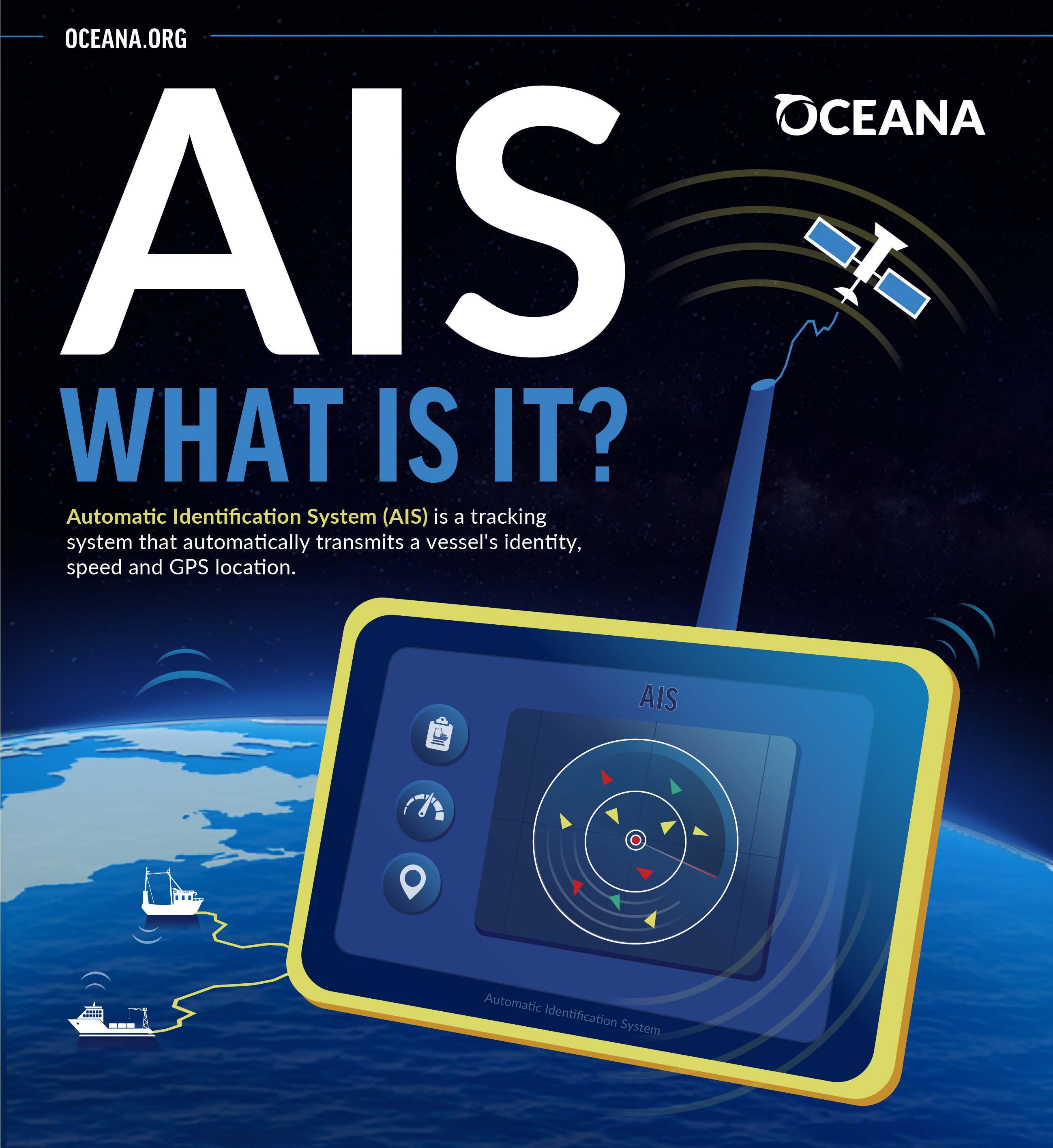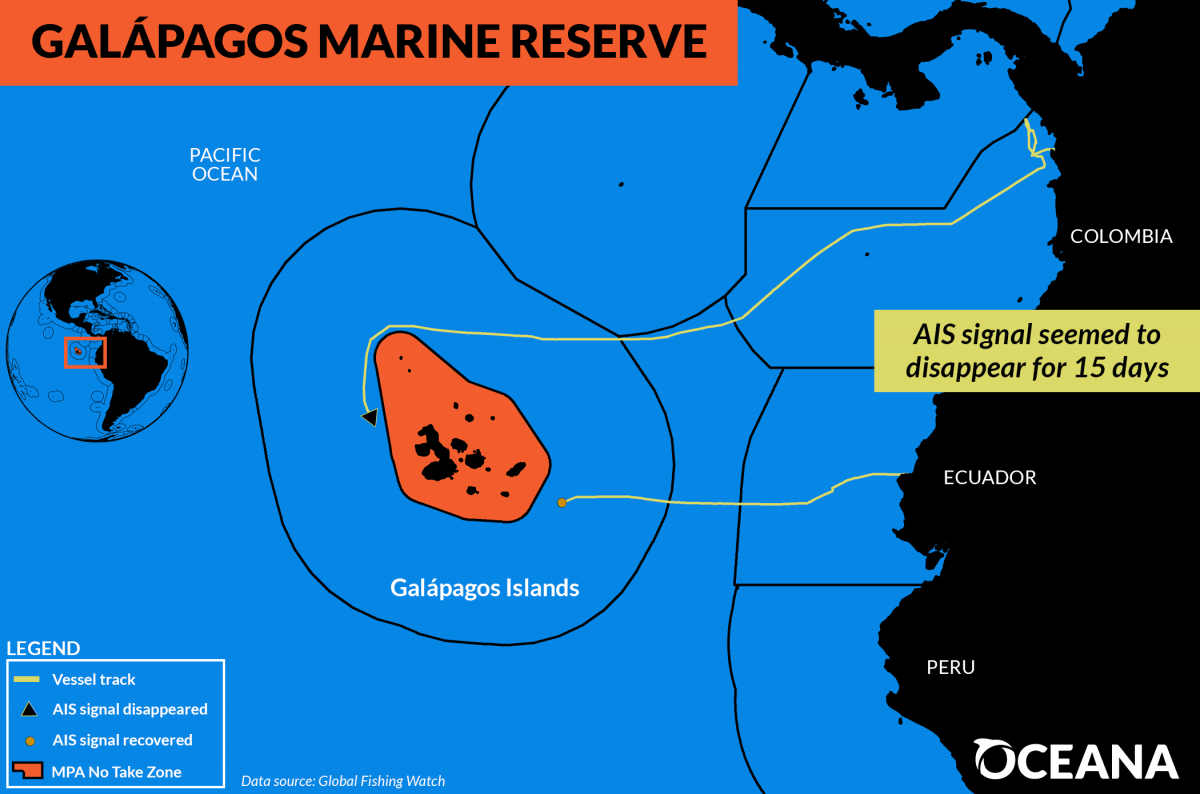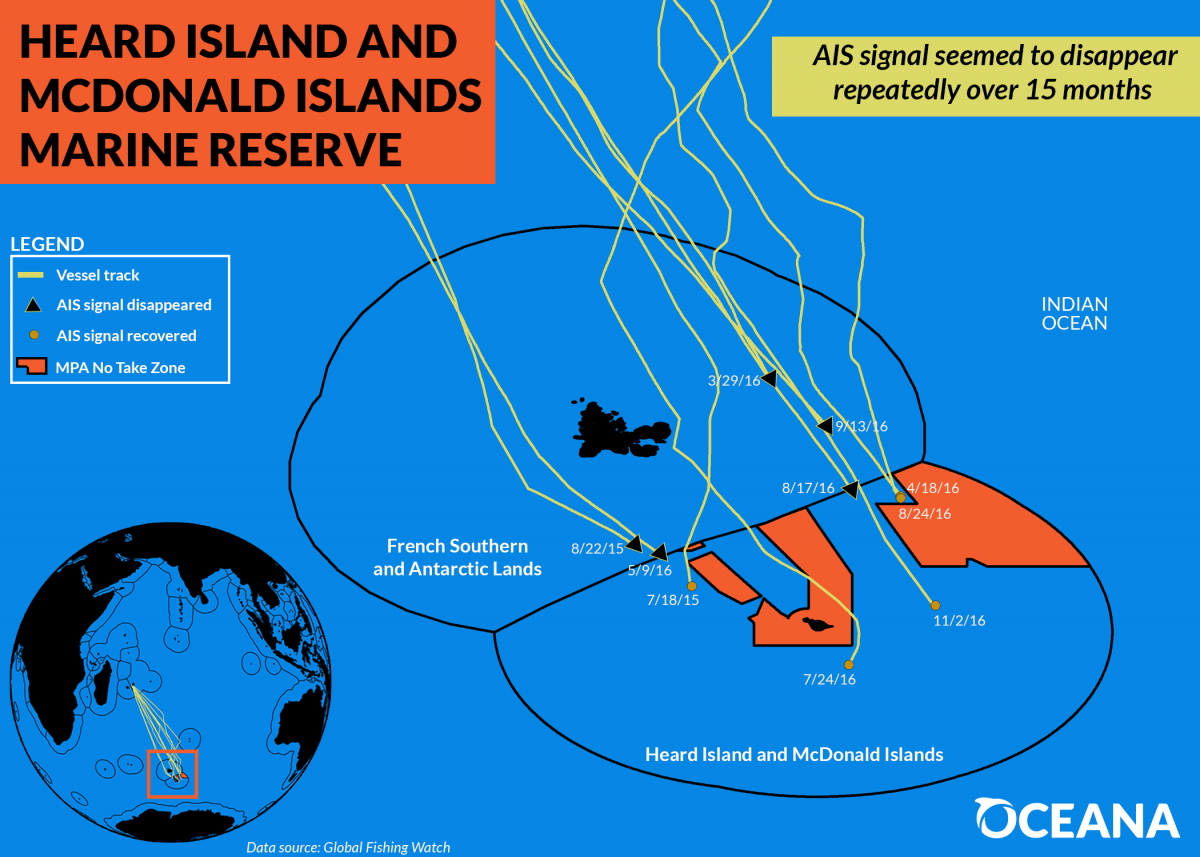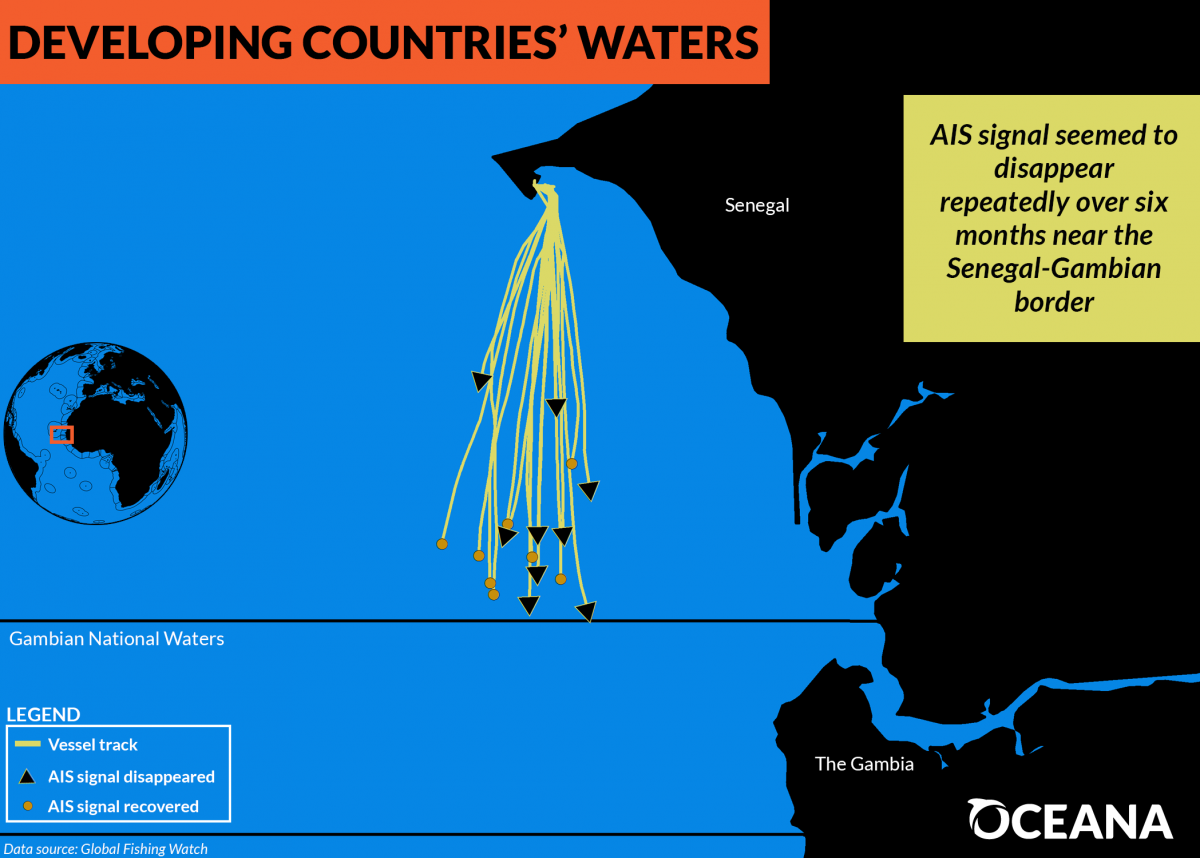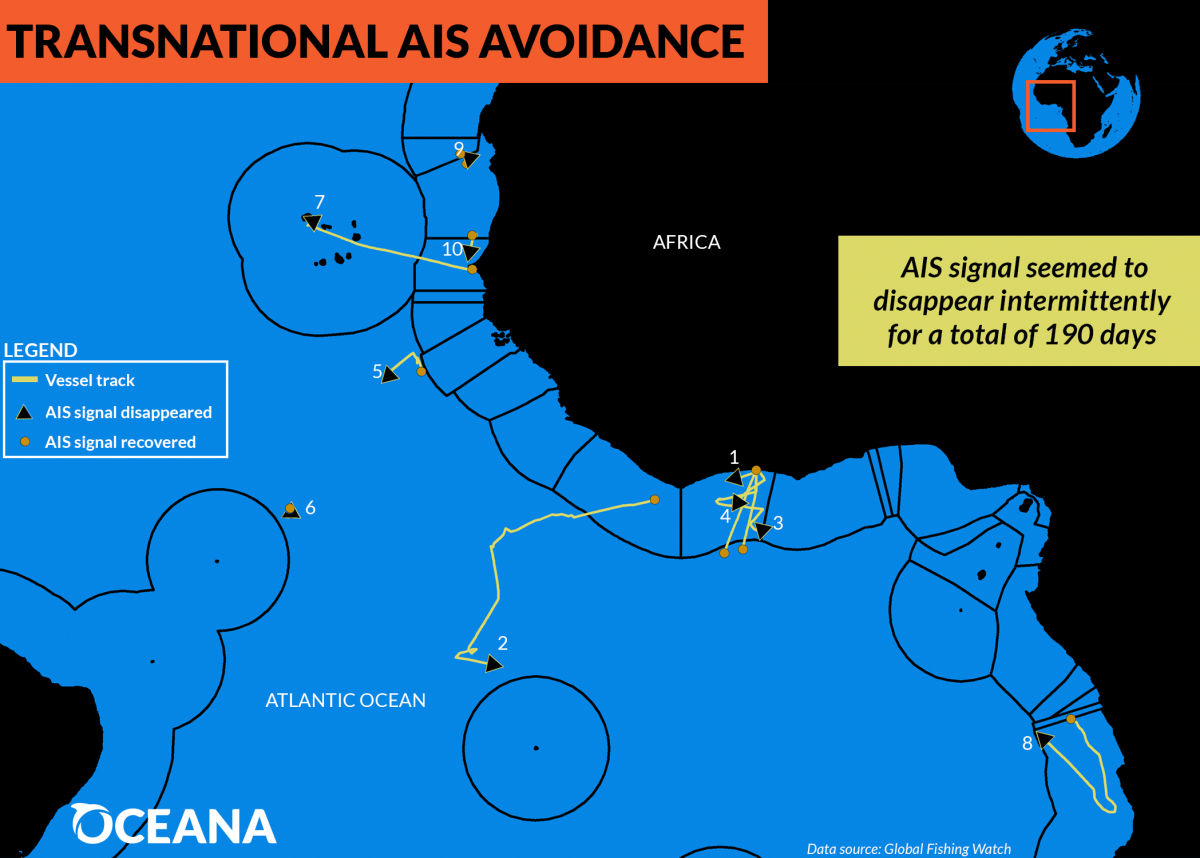Report | March, 2018
Avoiding Detection: Global Case Studies of Possible AIS Avoidance
Avoiding Detection: Global Case Studies of Possible AIS Avoidance
Oceana’s investigative report highlights four commercial fishing vessels that appeared to turn off their public tracking systems–a potentially questionable behavior known as going dark at sea.
While this public tracking system, called the Automatic Identification System (AIS), was initially designed as a safety mechanism for vessels to avoid collisions at sea, it can also be used to monitor and track vessel movements over time. A ship’s crew may turn off its AIS broadcast for a variety of legitimate reasons, but this behavior may indicate that a vessel is hiding its location and identity to conceal illegal activities like fishing in no-take protected areas or entering another country’s waters without authorization.
Using Global Fishing Watch, which provides a never-before-seen view of commercial fishing activity worldwide, Oceana identified the following events where a ship’s AIS device was possibly turned off:
A Panamanian commercial fishing vessel seemed to disappear on the west side of the Galápagos Marine Reserve, reappearing after 15 days on the east side of the reserve.
An Australian commercial fishing vessel appeared to disable its AIS near the Heard Island and McDonald Islands Marine Reserve on 10 separate occasions over one year.
A Spanish commercial fishing vessel appeared to repeatedly go dark when approaching The Gambia’s national waters over a one-and-a-half-year period.
Another Spanish commercial fishing vessel appeared to turn off its AIS signal consistently over a seven-month period while operating in the national waters of at least five African countries and on the high seas.
Read the Press Release.
View Graphics and Videos for each case study:
- Galápagos Marine Reserve: Graphic and Video
- Heard Island and McDonald Islands Marine Reserve: Graphic and Video
- Developing Countries’ Waters: Graphic and Video
- Transnational AIS Avoidance: Graphic and Video
View the full AIS infographic.
AIS infographic sections:
- What is AIS?
- What is AIS used for?
- How does AIS work?
- Who uses AIS?
- Where is AIS required?
- AIS advantages and vulnerabilities
- Why is AIS important?
- Oceana’s proposed solutions


